
Cobalt and Gold
Ambrosia: a concept study of gold, water and cobalt.
Diving into a wet-in-wet hot-pressed page, I blocked in the cooler blues, leaving drop spots for water. I then added metallic gold to the drop spots, and just walked away from it. On revisiting I saw that the gold pigment had pulled in some blues that went “cobalty”, so my painting told me what to do next: overlay the cobalt where it is showing inside the gold. For the touch of pink, I used Geranium Lake Blueish- a nod to a wonderful Canadian Watercolourist: Margaret Roseman.
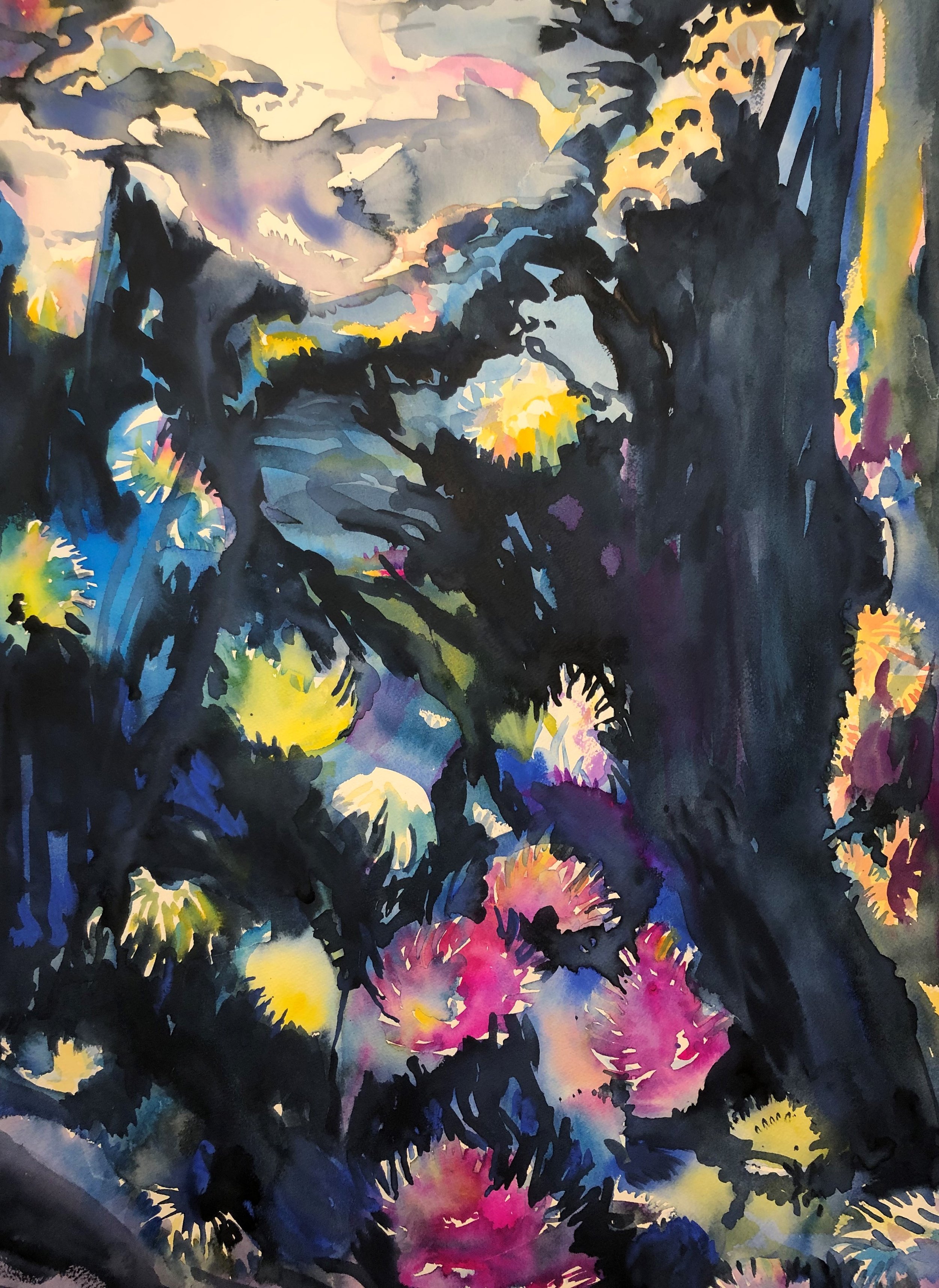
A painting fever.
ANEMONES draft abstract. A simple work-out of wet-in-wet technique, to capture my first impression of the anemone garden, at the aquarium. I will add more pink. It was the ‘vibrating colour’.

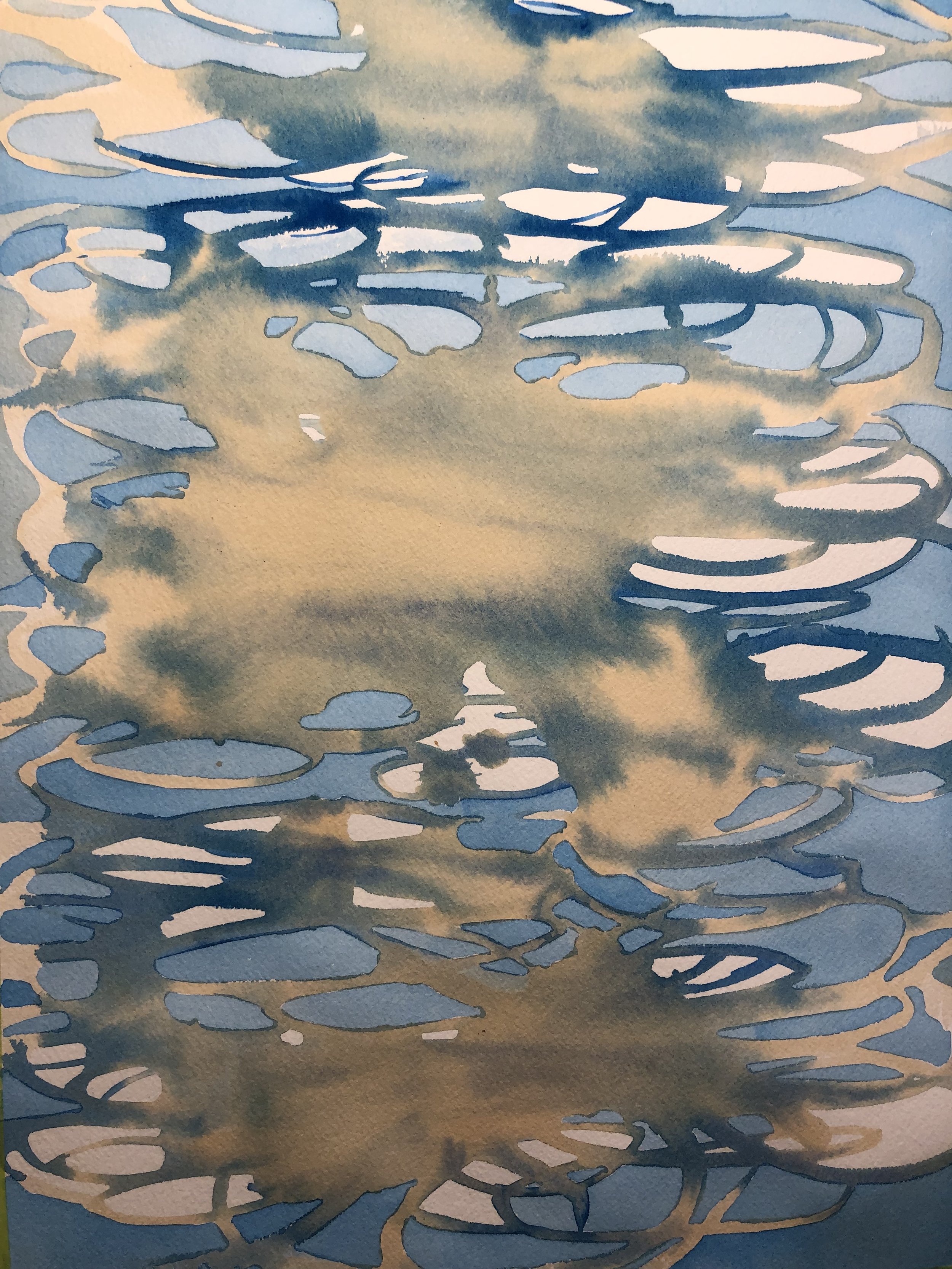
Spring Melt 2022
A first sign of Spring, is the big melt of a February “chinook”, as my mom used to call these warm winter winds.
Growing up in Goderich, it was, back then, a rare sight to see ‘pavement’, on the winter walk home from school. I am happy with this piece for two reasons: the ‘close-up’ puddle effect of a child’s ‘worm’s eye view’; and the feeling of warmth on white snow. I achieved the weak gold tone with an underpainting of steeped pekoe tea. This piece evokes memories of my daily winter school walks, with life-long best friend, Cindy.

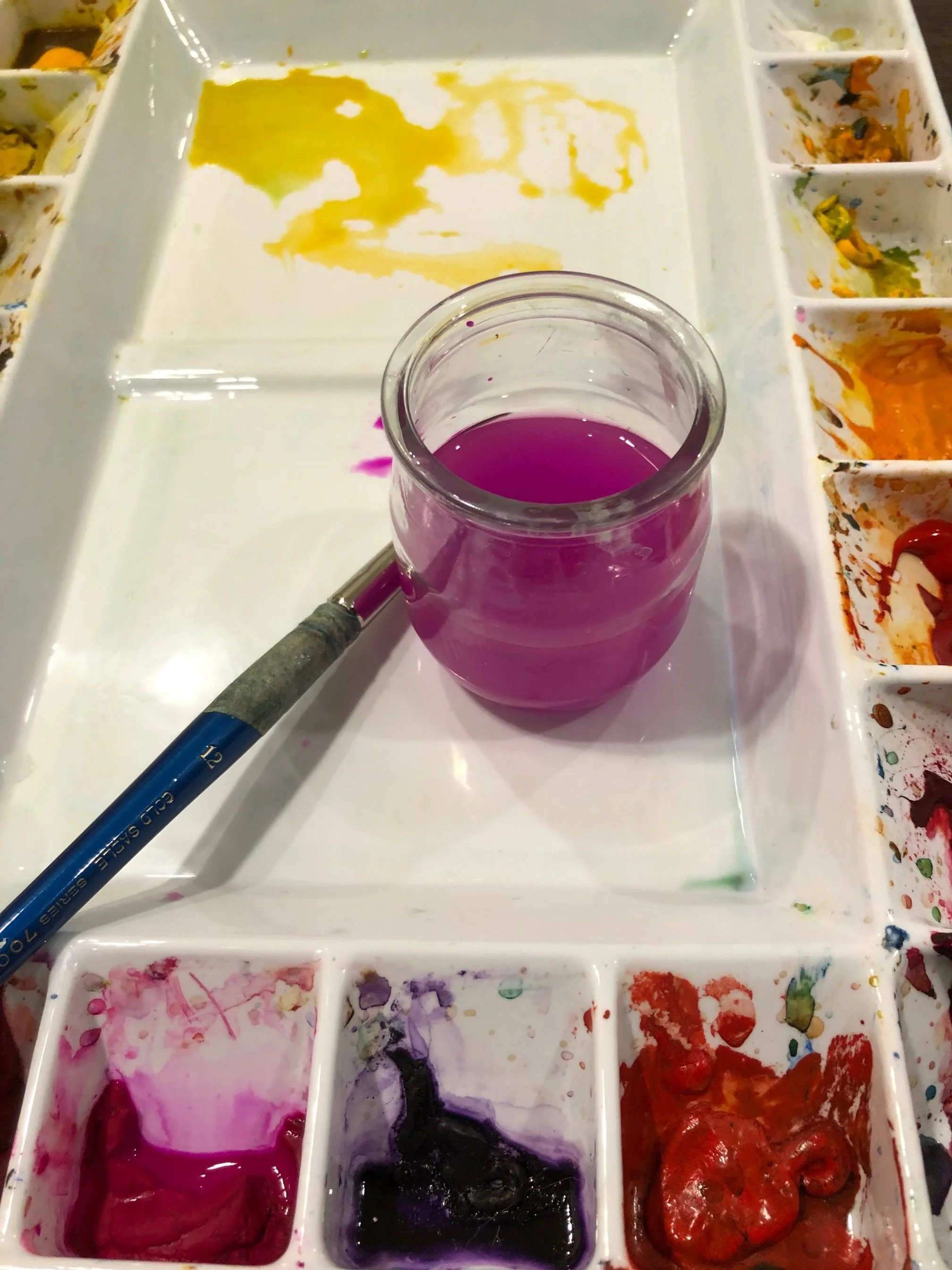
The Power of Petite Pot
The Power of Petite Pot glass jars to control colour clarity.
Tips and Tricks 2022, No. 2: Small water containers, changed more often. As the picture informs, I like to use recycled glass yogurt “pots” to hold and refresh water, especially in technical painting on the second or third pass.
This habit keeps clarity and control of clear water, both in the palette pool, and on the brush. Once I see muddy water, I know that I am in trouble and immediately dump it into a large plastic yogurt tub*. Then, I refresh the petite pot. This habit has helped me with mid-tones, and colour clarity, as I move closer to piece completion. It is not so useful on the first wash pass, when larger brushes and full water pools prevail. BLCB 2022
* anyone could also argue that a bucket of muddy water is just fine. Chuck Witter did this! For me, I want the certainty that what is on my brush is clean and clear.
If you have a special water tip, please share with us.

The Case for 2 Palettes
The Case for Two Palettes Tips and Tricks 2022 No. 1 Separate WARM & COOL Pigments
Finding the levers of CONTROL in painting is not so easy. For me, my guiding principle for control is: slow down, let the work inform your next step. Easier said than done. It has been incredibly useful for me, as a dedicated watercolourist to separate my blue or COOL Palette, from my WARMs, the reds, yellows and browns.
Having two palettes of pigment, forces me to make key colour decisions at the outset-the beginning of a piece. Sometimes, I will stick my favourite no. 8 round brush in a mixed pool in the COOL palette, and then do the same for the warm palette: two palettes and two brushes on the go. This all sound tedious and ‘beginnerish’. However, it has helped me sustain the highly coveted “transparency”, most of the time. This habit is really useful in the wet-in-wet time crunches, we create for ourselves. It also slows me down, as I must mindfully dive between two large palettes.
Hope this is helpful-BLCB Jan. 2022
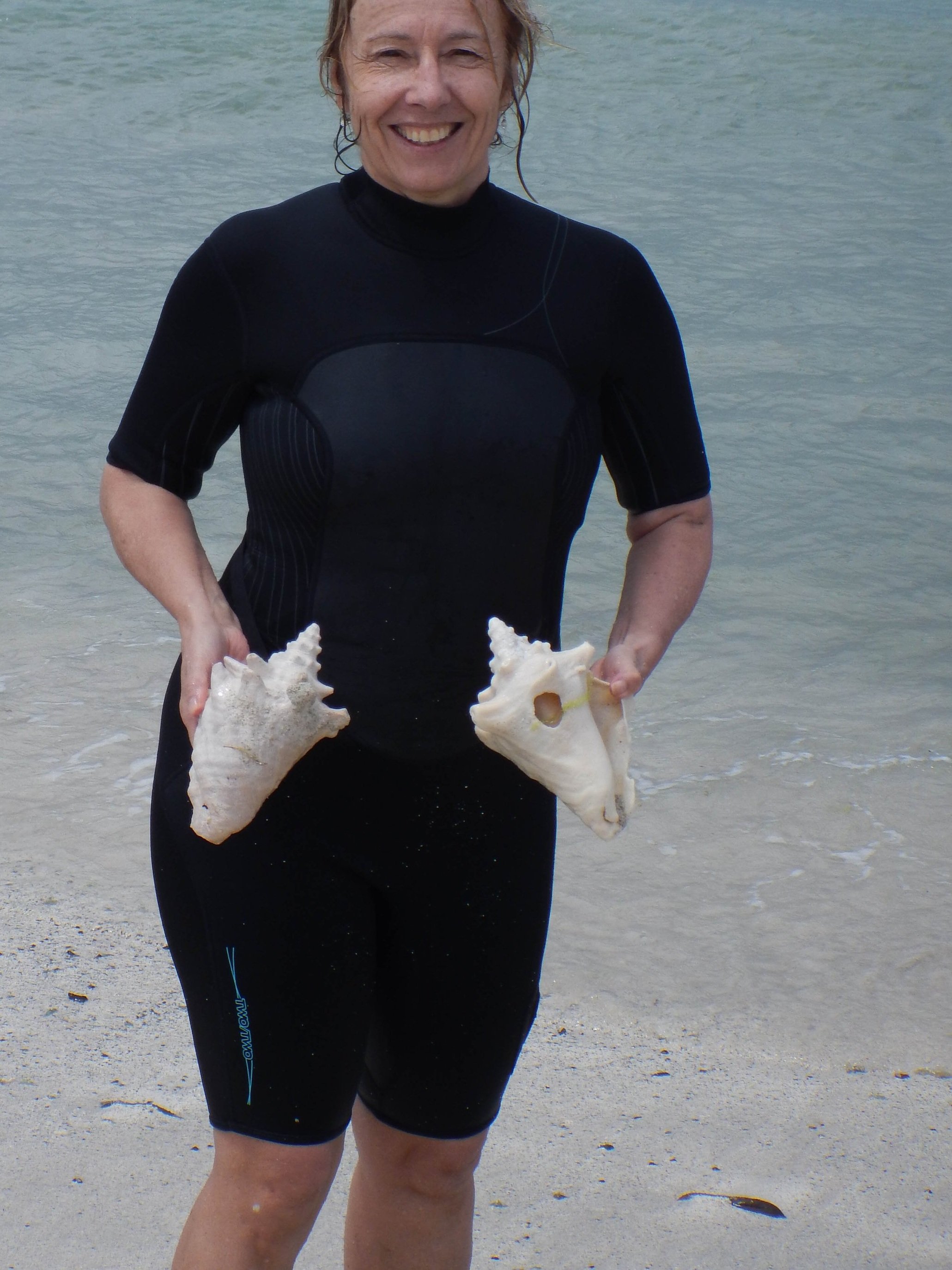
Discipline and devotion in art
Looking back, I would suggest to any “creative”, that they apply the same schedule and vigor to their craft, as they might, to say, working out regularly at a gym. It’s the 10,000 hours of mastery that we must accumulate, and then maintain over time.

Putting the TEA in Tea Lake, Algonquin Park
Upper and Lower Tea Lakes, in northern Algonquin Park in late autumn, present a smoky dilemma for the artist: how to show brown decay in shades that say autumn and hope? In this piece, I draped a 140 pound hot pressed cotton sheet with brewed tea. Left to dry overnight, the resulting areas remind me of marsh spaces.

Let chaos in: Koi No. 2
‘Nudged’ water, produces natural flow, which can form suggested or organic shapes, that seem TRUE to our trained eyes. The key ingredient in this type of painting approach, is human patience. Out of the ‘chaos’ of throwing down water on a blank white sheet, without a plan, rise unexpected moments.
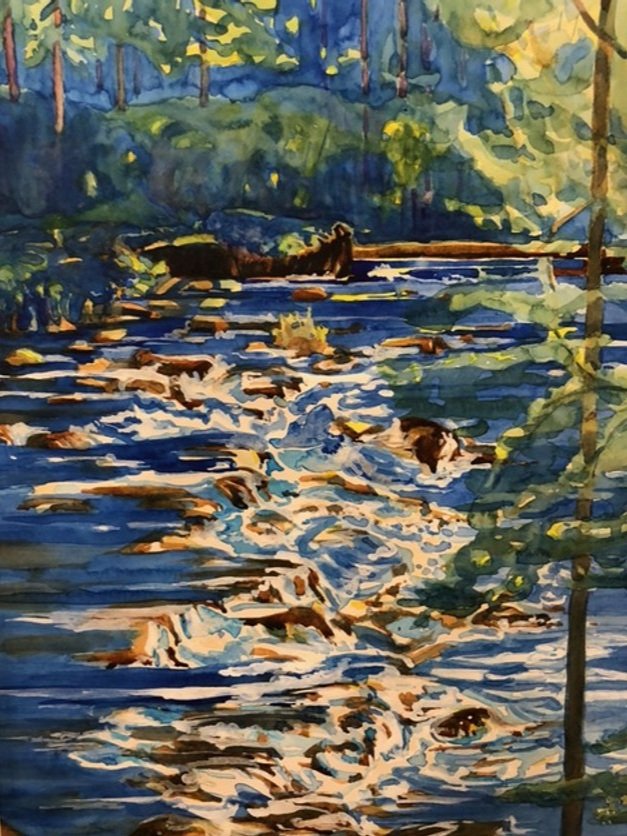
Personal Gallery 2022
Lower Stubb’s Falls, Arrowhead Provincial Park, Ontario 2021. Original watercolour. UV varnished.
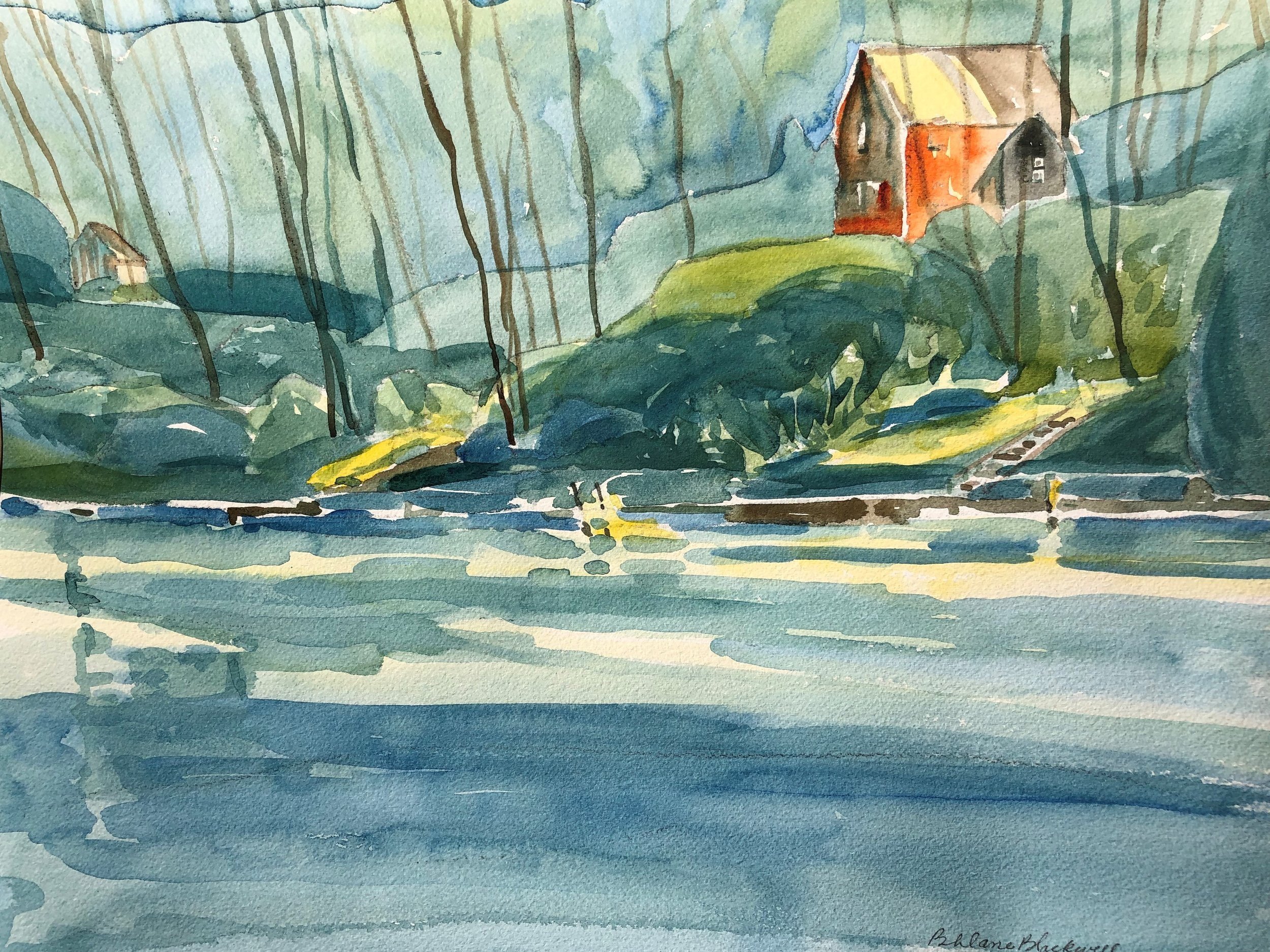
Keeping it simple, Bayfield River
Plein Air Painting (or on location, outdoors) - why it makes a difference.
I took one hour in late May 2021 to sketch and paint BAYFIELD RIVER, south shore, Bayfield, Ontario. It was about six pm, and the light was just falling along the river bank. I had to work quickly to capture this play. In landscapes, it is so easy to lose the “essentiality” of the focus- what I would call the ‘dreamy moment’. When I was half-way done this piece, I stopped. The light had changed. I am glad I did.





